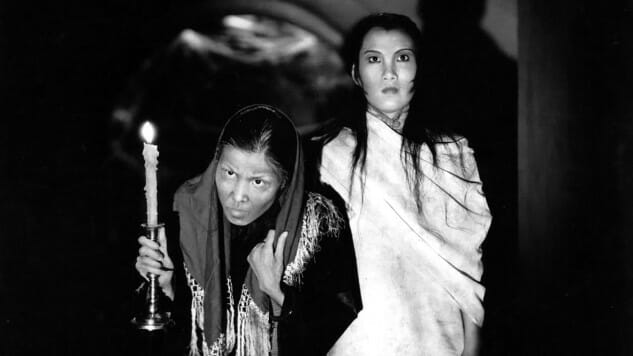
This post is part of Paste’s Century of Terror project, a countdown of the 100 best horror films of the last 100 years, culminating on Halloween. You can see the full list in the master document, which will collect each year’s individual film entry as it is posted.
The Year
It’s strange to think that only 6 years after the horror genre first saw its highest highs in America, it began to see one of its lowest lows. There were a number of reasons for the slowdown—for one, the Laemmle family, which had founded Universal, lost control of the studio in 1936 and it spelled a temporary end to the company’s horror focus, as the new management didn’t find horror worth the trouble of dealing with the increasingly stifling Production Code. At the same time, the important American film market of Great Britain instituted tighter restrictions on horror film ratings—not a death knell in and of itself, but spun that way by Joseph Breen and his Production Code Administration, who wished to suppress the production of horror films in general, given that they didn’t jibe with the Code. All in all, Breen and co. almost seem to have convinced American studios that horror
A. Wasn’t worth the trouble of producing, and
B. Had lost the popular support of the masses, and would no longer be viable at the box office.
This, of course, was fallacy, which is easy to see now, but would not have been that hard to believe at the time. The genre would come back in a big way in 1939, but for now the world production of horror films is as minimal as it’s ever been since before 1920. Only the presence of China’s first horror film, Song at Midnight, gives us something notable to write about for 1937.
1937 Honorable Mentions: Lonesome Ghosts, A Night of Terror
The Film: Song at Midnight
Director: Ma-Xu Weibang
Saving the day in terms of giving us something to write about for 1937 is Song at Midnight, often referred to as China’s first true horror film. This is a loose remake of The Phantom of the Opera, inspired heavily in certain areas by the famous, 1925 Universal version with Lon Chaney, although it also diverges in some interesting ways in terms of representing its own culture. In several aspects, Song at Midnight actually presages creative decisions that would be present in the 1943 Universal Phantom with Claude Rains, such as having the Phantom’s face burned by acid.
Other changes include the character of opera singer Christine, who is gender swapped here into a male performer named Sun Xiao Ou, who is not captured by the Phantom but instead given tutelage by him. Indeed, this version of the Phantom is less the tragic antihero of some other adaptations, and is much closer to being a genuine, sympathetic protagonist instead. He’s played quite skillfully by actor Shan Jin, and there are some wonderful moments with the Phantom in recovery from his attack, such as when he first removes his bandages and is nearly driven mad by the visage of his melted, grotesque face. He’s even given a chance to seek revenge directly for the attack that ruined his life, which certainly isn’t something you see from Chaney in 1925.
In terms of execution, on the other hand, Song at Midnight is a mixed bag, which you can see for yourself in several versions that are readily available online. Most of the English subtitles are a mess, making it difficult to follow the plot in a number of areas, and the sound effects in particular are distractingly amateurish. The music is more difficult for a Western audience to connect with as well, although the makeup effects on the Phantom’s face are actually top notch, and the visuals are shot competently, if grainily. What Song at Midnight could really use, in terms of modern presentation, is an HD remaster, but that seems unlikely given its lack of reputation.
Now we just need to get through one more lean year for horror, before the genre makes it triumphant return.
Jim Vorel is a Paste staff writer and resident horror guru. You can follow him on Twitter for more film and TV writing.